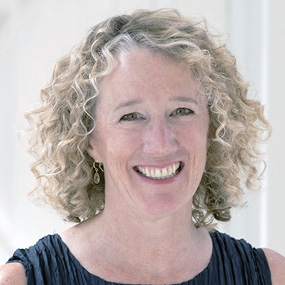Anaesthesia research: by women, on women and for women

Professor in Anaesthesia, Head of Research at Department of Anaesthesia and Pain Management Royal Melbourne Hospital and University of Melbourne
More than 50% of your patients will be women, but the evidence to help you care for them was largely created by men, on men and for men, and progress has been slow. The British Journal of Anaesthesia (BJA) Women in Anaesthesia Symposium was convened in June 2019 to discuss these issues and find solutions. My brief was to talk about the inclusion of women as participants in anaesthesia and perioperative medicine research.
The burden of disease and injury is different in women and men, but research about the effects of these differences is lacking. One of the few large studies reported that women are healthier than men before surgery and have fewer complications overall. However, they have worse outcomes after cardiac and vascular surgery, more strokes and more returns to theatre. More research about the reasons for these differences is needed.
Researchers also need to recruit more women to perioperative clinical trials. In our study looking at studies published in eight major anaesthesia journals in 2016, 45% of participants were women and 55% of participants were male (the range was 2% to 98% women). Fewer women will join clinical trials if the eligibility criteria are tailored for men (e.g. chest pain as a presenting symptom of myocardial infarction) or if recruitment strategies disadvantage women with carer responsibilities.
On the statistics front, researchers should pre-plan an analysis of the effect of the intervention in women and men. Biases still exist against consideration of sex differences, such as an historical attitude of maleness as ‘normal’ and concern about the risk of spurious results. I think that these analyses are justified if the limitations are carefully considered.
Organisations that regulate, fund, govern and publish research also need to raise their game. Regulators and funders need to make inclusion of women a requirement for approval and funding. In a study of 45 national funding agencies in 36 countries, only 15 agencies had policies about the inclusion of women. As funding is highly competitive these days, these agencies have a huge opportunity to affect change.
Research offices frequently require researchers to comply with guidelines (e.g. SPIRIT and CONSORT). These guidelines do not specifically address the inclusion of women. Journal editors agree that adequate numbers of women should be recruited and that sex-based analyses should be done, but they do not enforce their own guidelines. In our 2016 study, only 18% of papers about randomised trials included a sub-group analysis based on sex.
Speakers at the BJA Women in Anaesthesia Symposium agree that stronger participation of women in research leadership, from government, institutions, journals through to trial networks, research offices and individual research teams, is vital if we want to provide better evidence for women having surgery. We must find ways to attract capable women to leadership positions and capable women must consider taking up the challenge.
So far efforts to include more women in medical research have been fragmented, inconsistent, unsophisticated and not enforced. Progress has been unacceptably slow. This failure has nothing to do with the significance of women’s health and everything to do with not wanting to rock the boat. In 2020 we must do better.
Kate Leslie
